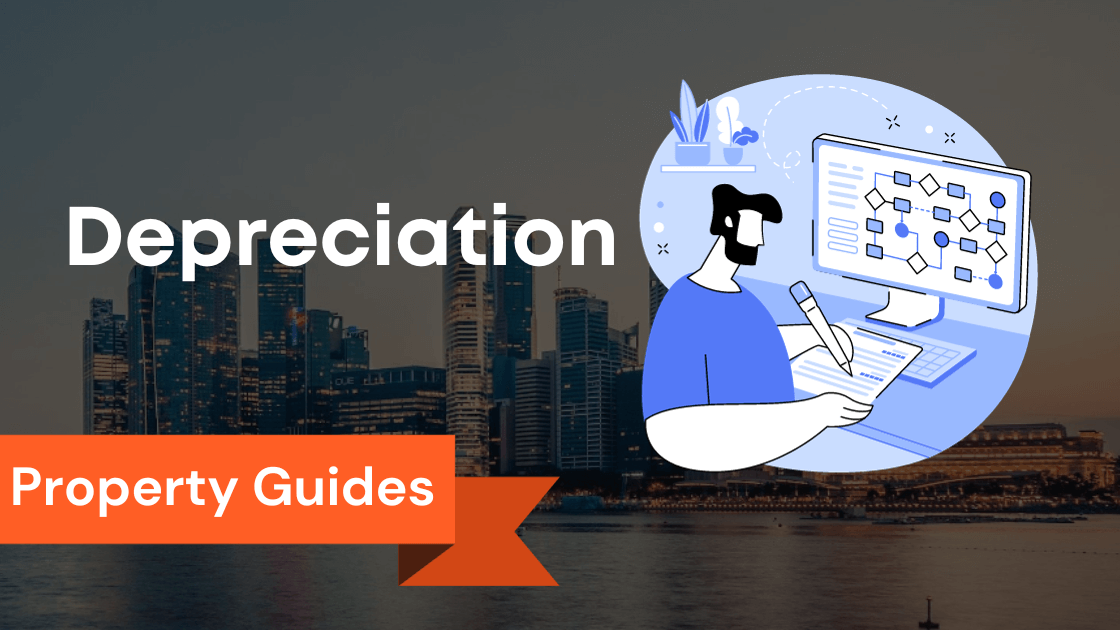
What is Ethnic Integration Policy (EIP) in Singapore?
The Ethnic Integration Policy (EIP) in Singapore is a race-based policy that aims to promote racial integration and harmony in public housing estates.
Singapore is known for its diverse ethnic mix, with different races living together harmoniously.
However, to prevent the formation of racial enclaves and maintain an equitable distribution of ethnic groups, the EIP was introduced.
Definition of Ethnic Integration Policy
The Ethnic Integration Policy (EIP) ensures that Singapore’s public housing estates have a balanced mix of ethnic proportions.
It encourages a race-blind society by preventing the concentration of any single ethnic group in public housing estates.
The EIP was implemented as part of a larger conversation on race relations during the National Conversation initiative.
History of Ethnic Integration in Singapore
The Ethnic Integration Policy (EIP) was first introduced in Singapore’s Parliament on 16 February 1989.
The Ministry of National Development, under the leadership of then-Minister S. Dhanabalan, spearheaded the development of this policy.
The EIP aimed to address the potential risks of ethnic segregation and promote social integration among Singapore’s different ethnic groups.
Key Features of Ethnic Integration in Singapore
The Ethnic Integration Policy (EIP) operates within the public housing sector, which is predominantly managed by the Housing and Development Board (HDB).
Some key features of the EIP include:
- Ethnic Proportions: The policy ensures that each public housing estate maintains a balanced mix of different ethnic groups. It sets quotas for each ethnic group based on their proportions in the overall population.
- Housing Stock: The HDB controls the allocation of public housing based on the EIP. This ensures that new buyers or tenants are assigned housing units in a way that maintains the desired ethnic mix within each estate.
- Racial Integration: The EIP promotes racial integration by encouraging residents of different ethnic backgrounds to live together in the same housing estate. This helps foster social cohesion and understanding among Singaporeans.
- Diverse Communities: By preventing the formation of ethnic enclaves, the EIP ensures that communities remain diverse and inclusive. This allows individuals from different ethnic backgrounds to interact and learn from one another.
The Ethnic Integration Policy (EIP) in Singapore plays a vital role in maintaining racial harmony and fostering societal cohesion.
It serves as a cornerstone of Singapore’s multicultural society, ensuring that all residents have equal opportunities to live and thrive in diverse communities.
Key Takeaways
- Definition and Purpose of EIP:
- The EIP promotes racial integration and harmony in public housing estates.
- It ensures a balanced mix of ethnic proportions, preventing the concentration of any single group.
- History and Initiation:
- Introduced in 1989 by the Ministry of National Development to address ethnic segregation risks.
- Spearheaded by then-Minister S. Dhanabalan.
- Key Features of EIP:
- Operates within HDB-managed public housing.
- Sets quotas for ethnic groups to maintain diversity.
- Controls housing allocation to achieve the desired ethnic mix.
- EIP Quota System:
- Determines the maximum percentage of flats for each ethnic group in a block or neighborhood.
- Calculated based on ethnic quotas and total percentage of flats.
- Impact on Flat Allocation:
- Ensures equal access to public housing for all ethnic groups.
- Case-by-case allocation with exceptions for genuine difficulties.
- Buying and Selling under EIP:
- Buyers must meet corresponding ethnic quotas.
- Introduction of the EIP buyback scheme for fairness and equality.
- Challenges in Fulfilling EIP Quota:
- Balancing individual preferences with EIP regulations.
- Challenges include limited eligible buyers and classification complexities.
- Strategies and Solutions:
- Waiving EIP limits for flexibility.
- Government support for EIP-constrained flat owners.
- Continuous monitoring and reviews of EIP regulations.
- Effectiveness of EIP:
- Positive impact on breaking racial barriers and fostering unity.
- Encourages social interaction and reduces residential segregation.
- Public Opinion and Debate:
- Some see EIP as intrusive; others view it as necessary for integration.
- Continuous public debate and government emphasis on community participation.
Understanding the EIP Quota System

Explanation of the EIP quota and how it is calculated
The Ethnic Integration Policy (EIP) in Singapore aims to foster racial harmony and prevent the formation of ethnic enclaves by maintaining a balanced ethnic mix in public housing estates.
The policy ensures that no single ethnic group dominates a particular neighborhood.
The EIP quota determines the maximum percentage of flats that can be occupied by each racial group in a block or neighborhood.
The calculation of the EIP quota is based on ethnic quotas and the total percentage of flats in a block.
For example, if the EIP limit for Chinese occupants is set at 85%, it means that in a block of 100 flats, a maximum of 85 flats can be occupied by Chinese residents.
The remaining 15 flats must be allocated to residents from other ethnic groups.
These ethnic quotas help to ensure a diverse mix of residents.
https://youtu.be/BCFxM0EcBVg?si=1hKtsiNdlEdBI52u
The EIP limits are reviewed periodically to reflect demographic changes and maintain a balanced ethnic mix.
The limits are set based on the ethnic proportions of the population at large, as well as the proportion of flats owned by each ethnic group.
According to former Minister Dhanabalan, who introduced the EIP in 1989, the policy is not intended to enforce strict ethnic quotas for individual flats but rather to maintain a balanced mix at the block or neighborhood level.
This allows flexibility in the allocation of flats based on the overall racial composition of an estate.
Impact of the EIP quota on the allocation of flats in HDB estates
The EIP quota has a significant impact on the allocation of flats in Housing Development Board (HDB) estates.
It ensures that all ethnic groups have equal access to public housing and prevents any single racial group from dominating certain neighborhoods.
The EIP applies to both new flats and resale flats in HDB neighborhoods.
Under the EIP, allocation of flats is done on a case-by-case basis to ensure that it complies with the ethnic quotas.
Flat owners who face genuine difficulties in moving due to the EIP limits may be granted exceptions to the quota in exceptional circumstances.
The EIP also has a larger impact on minorities, as it provides an assurance that they will not be marginalized or excluded from certain areas.
It promotes social integration and cohesion by encouraging interaction and understanding among residents of different ethnic backgrounds.
Without the EIP, there may be a risk of residential segregation, where certain neighborhoods become predominantly occupied by a single ethnic group.
This could lead to a lack of diversity and potential social tensions.
While the EIP helps to maintain a balanced ethnic mix, it is important to ensure that it does not create undue hardships for flat owners who may face challenges in finding housing that meets their needs.
The government recognizes this and provides flexibility by allowing exceptions in certain circumstances.
Overall, the EIP quota system plays a crucial role in Singapore’s efforts to promote racial harmony and integration.
By ensuring a diverse mix of residents in public housing estates, the policy fosters a sense of belonging and inclusiveness among Singaporeans of different races and ethnicities.
Buying and Selling HDB Flats under the EIP – EIP Buyback Price

For many Singaporeans, buying and selling HDB flats is a significant milestone in their lives.
However, it is important to understand the Ethnic Integration Policy (EIP) and its impact on the process.
The EIP is a government policy designed to promote ethnic integration in HDB estates. Let’s explore how it affects both sellers and buyers.
The Malay community in Singapore has been facing challenges in finding affordable housing.
In order to address this issue, the Housing and Development Board (HDB) has recently announced that they will be appointing a professional to specifically focus on the needs of the Malay community.
This move is aimed at ensuring that Malays are able to secure a flat at a reasonable price, considering their specific circumstances and challenges.
The HDB understands the importance of providing affordable housing options to all Singaporeans, regardless of their ethnicity.
Through the appointment of a dedicated professional, the HDB aims to better understand the unique needs of the Malay community and develop targeted strategies to meet their housing requirements.
However, it is important to note that the availability of flats at a reasonable price will also be influenced by the broader resale market.
The current policy measures implemented by the government to ensure the stability of the property market might have an impact on the availability and pricing of flats, including those for the Malay community.
It is, therefore, crucial to continuously review and assess the policy in order to make necessary adjustments to ensure that the affordable housing needs of the Malay community are not adversely affected.
The recent discussions in parliament have highlighted the emergence of various issues concerning the ethnic, mind, and HDB policies.
One of the key concerns raised was the HDB’s plan to buy back flats from owners who wish to sell their properties before the end of their Minimum Occupation Period (MOP).
This move by the HDB has raised questions about the value of the flat and the implications it may have on homeowners who wish to sell their properties in the future.
Additionally, there has been a significant emphasis on the ethnic integration policy, which aims to ensure a balanced racial mix in HDB estates.
This policy has been a topic of debate, with some arguing that it promotes racial harmony, while others argue that it restricts individual freedom to choose their neighbors.
It is crucial for parliament to address these issues in a serious tone, as they affect a large portion of the population.
The emergence of ethnic, mind, and HDB policies requires careful consideration and thoughtful discussions to ensure that the interests and rights of homeowners, as well as the overall social cohesion of Singapore, are upheld.
It is essential for parliament to engage in open dialogues and solicit public feedback to make informed decisions that will serve the best interests of the nation.
By addressing these concerns seriously, parliament can work towards finding effective and sustainable solutions for the challenges arising from these policies.
Exploring the process of buying a flat and the EIP requirements for flat owners
When purchasing a flat, it is important to be aware of the EIP requirements.
Under the EIP, each HDB block and neighborhood has a specified ethnic quota.
This means that when a flat owner decides to sell their flat, they can only sell it to a buyer who meets the corresponding ethnic quota.
For example, if a flat owner belongs to the Chinese ethnic group, they can only sell their flat to a buyer who is eligible to purchase a flat in an area with a Chinese ethnic quota.
This requirement ensures a balanced mix of ethnic groups in HDB estates and prevents the concentration of a particular ethnicity within a specific area.
By promoting ethnic integration, the EIP fosters social cohesion and harmony.
The policy implemented by the Housing and Development Board (HDB) has had a significant impact on residents in their decision-making process.
Under this policy, HDB will buy back flats from homeowners who wish to sell their properties.
This has caused people of different backgrounds and circumstances to carefully assess their options and evaluate the benefits of selling their flats back to HDB.
Given the gravity of this decision, residents are given a three-month timeframe to consider before making their final choice.
Upon reaching a decision, they must then submit them to hdb application, indicating their desire to sell their flat back to the organization.
It is important to note that HDB may choose to buy back the flats on a block or neighbourhood basis, meaning that if there are not enough units available for buyback in a particular block or neighbourhood, individuals may have to wait until the EIP (Ethnic Integration Policy) limits are reached.
This policy ensures the fair allocation of housing units across different ethnic groups, further adding to the complexities residents face in making a decision.
Overview of the EIP buyback scheme and its objectives
The EIP buyback scheme is a policy introduced by the government to assist flat owners who are unable to sell their flats due to EIP constraints.
Under this scheme, the government buys back the flat at a price determined by HDB.
The objectives of the EIP buyback scheme are to provide financial assistance to flat owners who are unable to sell their flats within the stipulated time frame and to maintain the ethnic proportion in HDB estates.
When a flat owner accepts HDB’s buyback offer, they can then apply for a new flat or consider other housing options such as rental flats.
This government policy helps to ensure fairness and equality in the housing market, allowing everyone to have equal opportunities to buy and sell HDB flats.
It also promotes a harmonious and integrated society by preventing the formation of ethnic enclaves.
In conclusion, understanding the Ethnic Integration Policy (EIP) is crucial when buying and selling HDB flats in Singapore.
By adhering to the EIP requirements, flat owners contribute to the promotion of ethnic integration in HDB estates, while the EIP buyback scheme provides assistance to those facing difficulties in selling their flats.
Together, these measures create a balanced and harmonious living environment for all Singaporeans.
Fulfilling the EIP Quota: Challenges and Solutions

The Housing Development Board (HDB) has announced an important decision to appoint a professional to manage the impact of its policies.
This move has been prompted by recent events that have highlighted the emergence of ethnic imbalances in certain housing estates.
Recognizing the need for a comprehensive review, both the Ministry of National Development (MND) and HDB have entrusted this task to a qualified expert who will assess the situation and propose necessary remedies.
The appointment of a professional is a significant step towards addressing the concerns of affected residents, as it demonstrates a commitment to rectify any issues caused by HDB’s policies.
Additionally, HDB has also expressed its intention to implement a scheme to buy back flats from owners who are adversely affected by the policy.
This shows a proactive approach in resolving any grievances and safeguarding the welfare of homeowners.
Overall, these actions by HDB and MND demonstrate their dedication to creating a fair and inclusive housing environment for all residents.
Balancing Individual Preferences with EIP Regulations
Singapore’s Ethnic Integration Policy (EIP) was implemented to promote racial harmony and ensure a balanced mix of ethnic groups in residential areas.
While this policy has successfully prevented the formation of ethnic enclaves, it does present challenges for flat owners in meeting the EIP quota.
Meeting the EIP limits in exceptional circumstances can be a common challenge for flat owners, especially when they have genuine difficulties in finding eligible buyers from different ethnic groups.
It is important to take into consideration the financial hardship faced by flat owners who may face difficulties meeting the quota due to limited availability of eligible buyers.
When it comes to making such a crucial decision, three months may seem like an eternity.
However, when it involves choosing between an HDB block or a neighbourhood, every minute of that time is essential.
One must carefully contemplate the pros and cons of each option, considering factors like convenience, amenities, and proximity to schools and workplaces.
After thorough research and site visits, one may finally arrive at a conclusion that aligns with their needs and preferences.
But alas, the decision-making process does not end there.
Should one wish to accept HDB’s buyback offer, they must also take into account the Ethnic Integration Policy (EIP) limits.
These limits ensure racial harmony and diversity within HDB estates, but they can pose a challenge for those who do not meet the requirements.
It is imperative to assess one’s eligibility within the stipulated timeframe and explore alternative options if the EIP limits cannot be met.
Such a decision cannot be rushed, as it has far-reaching implications for one’s long-term dwelling and quality of life.
Patience and careful consideration are paramount when dealing with such significant choices.
Furthermore, some flat owners may encounter rough edges of the EIP regulations when it comes to the classification of ethnic groups based on skin colour.
This can create added complexities and hinder their ability to fulfill the EIP requirements and assess requests for buyback assistance. o
One or more eip limits flat owners can take away with the eip, hdb owners, total percentage of a block, number of eip-constrained flat owners,eip-constrained flat owners may face, assist these flat owners,flat owner is assessed, flat owners should keep, Singapore permanent.
A small number of eip-constrained flat owners more time to sell and owners who do not fulfil.
Another challenge faced by flat owners is the restricted availability of units within their preferred areas.
This may limit their options to fulfill the EIP quota, leading to frustration and difficulties in meeting the requirements.
https://youtu.be/5q_fLlwU85s?si=UFD2dRzsOGTYbRZ5
Strategies and Options Available to Fulfill the EIP Quota
To assist flat owners in meeting the EIP quota, there are strategies and options available that can help alleviate the challenges they face.
One possible solution is waiving the EIP limits for one or more ethnic groups.
This would allow flat owners to have more flexibility in finding eligible buyers and fulfilling the quota without compromising the objectives of the EIP.
The government can also provide support for EIP-constrained flat owners, such as offering financial assistance or alternative housing options.
This would help alleviate the financial hardship faced by flat owners and ensure they can meet the EIP requirements.
Furthermore, continuous monitoring and reviews of the EIP regulations are necessary to address any unintended consequences.
It is essential to strike the right balance between promoting racial integration and preventing the formation of ethnic enclaves.
This aspect of segregation may be unintentionally perpetuated by the EIP policy and should be carefully examined to ensure its effectiveness.
While fulfilling the EIP quota can present challenges for flat owners, there are strategies and options available to assist them.
Balancing individual preferences with EIP regulations and providing adequate support will help promote racial harmony and ensure a diverse and inclusive residential environment in Singapore.
Evaluating the Effectiveness of the EIP

Analysis of the impact of the EIP in promoting integration in Singapore’s housing estates
The Ethnic Integration Policy (EIP) in Singapore was introduced in 1989 to address the issue of communal clustering and promote greater ethnic integration in public housing estates.
The policy aims to maintain a diverse ethnic mix across Housing and Development Board (HDB) estates, preventing the emergence of ethnic enclaves.
The impact of the EIP has been significant in breaking down racial barriers and fostering a sense of unity among residents.
By ensuring a diverse ethnic mix across HDB estates, the policy encourages social interaction and integration between residents of different ethnic backgrounds.
This helps to create a harmonious and cohesive society in Singapore.
One of the positive impacts of the EIP is that it has encouraged members of minority communities to live in areas where they may not have traditionally resided.
This has helped to reduce residential segregation and promote social cohesion.
The policy also ensures that larger ethnic communities do not dominate specific neighborhoods, thereby preventing the formation of racial enclaves.
However, it is important to acknowledge that the EIP has had a larger impact on minority communities.
Some members of these communities have expressed concerns that the policy restricts their housing choices and limits their ability to live in areas where they have strong social networks.
It is essential to strike a balance between promoting integration and respecting the preferences and needs of minority groups.
Public opinion and debate surrounding the EIP
The EIP has been a topic of public opinion and debate in Singapore.
Some critics argue that the policy is an intrusive social policy that interferes with people’s freedom to choose their neighbors.
They believe that individuals should have the autonomy to live with people of their own ethnic background if they desire.
The ethnic integration policy in Parliament, Bedok, and Tampines plays a crucial role in fostering social cohesion and inclusion within diverse communities.
Recognizing the importance of promoting harmony and unity, the government has implemented strict regulations to ensure that no single ethnic group dominates the public housing estates.
This policy aims to cultivate a sense of belonging and shared identity among residents of different ethnic backgrounds.
In order to enforce the policy, the Housing and Development Board (HDB) will assess requests from residents to ensure an equitable distribution of ethnic groups within specific precincts.
Moreover, to ensure fairness and accuracy in the evaluation process, the HDB will appoint a professional licensed valuer to determine the ethnic composition of the potential residents.
This approach helps to maintain the delicate balance of diversity and prevent any form of racial segregation, fostering a harmonious living environment for all residents.
On the other hand, proponents of the EIP argue that it is a necessary policy to prevent the formation of racial enclaves and promote integration.
They believe that a diverse and integrated society strengthens social cohesion and helps build a shared national identity.The debate in parliament resulted in a 30-minute debate on the EIP, with different segments of society expressing their views.The government has emphasized the importance of community participation in shaping the policy and ensuring that it meets the needs of the residents.
Overall, the EIP has played a crucial role in promoting ethnic integration in Singapore’s housing estates.
While it has received both support and criticism, the policy has successfully maintained a diverse ethnic mix across HDB estates and fostered a sense of unity and social cohesion among residents.
It is a continuous effort to strike the right balance between promoting integration and respecting the preferences of individuals and minority groups.
Conclusion
Summary of key findings and insights
In conclusion, the Ethnic Integration Policy (EIP) has played a crucial role in promoting ethnic integration and maintaining racial harmony in Singapore.
The policy has been successful in ensuring a balanced mix of ethnic groups in HDB estates and preventing the formation of racial enclaves.
Desmond Lee, the Minister for National Development, highlighted the positive impact of the EIP on ethnic integration.
He stated that the policy has created opportunities for interaction and understanding among different racial groups, fostering a sense of inclusivity and multiculturalism.
One notable finding is the gradual shift in the ethnic composition of neighborhoods.
Over the years, there has been an increase in mixed-race households and a decrease in majority race domination.
This indicates progress in achieving a more racially diverse society.
Another important insight is the need to address the challenges faced by minority race flat buyers.
The government acknowledges that there are differences in the demand and supply of flats across ethnic groups.
Efforts are being made to ensure fair access to housing for all races, including measures to facilitate resale transactions for minority race flat owners.
Future Prospects of the Ethnic Integration Policy
Looking ahead, the government recognizes the importance of continually reviewing and refining the EIP to adapt to changing demographics and societal needs.
The policy will remain a key component of Singapore’s housing policy to ensure a harmonious and inclusive society.
Pritam Singh, leader of the Workers’ Party, emphasized the need for a race-neutral approach in policymaking to ensure that all citizens, regardless of their ethnic background, can enjoy equal opportunities and benefits.
This highlights the importance of striking a balance between maintaining ethnic integration and promoting a race-blind society.
As Singapore continues to evolve, it is crucial to sustain and strengthen the principles of racial harmony and inclusivity.
The EIP will continue to play a vital role in achieving these goals, creating a cohesive society where individuals of different races live harmoniously as one united nation.
Frequently Asked Questions
What is the ethnic integration policy (EIP)?
The ethnic integration policy (EIP) is a policy implemented by the Housing and Development Board (HDB) in Singapore to promote racial harmony and integration in public housing estates. It aims to ensure a balanced ethnic mix across HDB blocks and neighborhoods.
Who does the ethnic integration policy (EIP) apply to?
The ethnic integration policy (EIP) applies to all flat owners in HDB estates.
Why was the ethnic integration policy (EIP) implemented in public housing?
The ethnic integration policy (EIP) was implemented to prevent the formation of ethnic enclaves in HDB estates and to promote social harmony among residents.
How does the ethnic integration policy (EIP) work in estate?
The ethnic integration policy (EIP) works by setting limits on the ethnic composition of HDB blocks and neighborhoods. It ensures that there is a balanced mix of ethnic groups in each block and neighborhood.
What happens if a flat owner wants to sell their flat but does not meet the ethnic integration policy (EIP) requirements?
If a flat owner wants to sell their flat but does not meet the ethnic integration policy (EIP) requirements, they will not be able to sell their flat unless they are eligible for buyback assistance from the HDB.
Who is responsible for enforcing the ethnic integration policy (EIP)?
The Housing and Development Board (HDB) is responsible for enforcing the ethnic integration policy (EIP) in Singapore.
Can a flat owner appeal against the ethnic integration policy (EIP) requirements?
Yes, a flat owner can appeal against the ethnic integration policy (EIP) requirements if they have valid reasons and evidence to support their appeal.
Are there any exceptions to the ethnic integration policy (EIP) requirements?
Yes, there are some exceptions to the ethnic integration policy (EIP) requirements. These exceptions are based on certain ethnic or racial considerations and are determined by the HDB.
Can market forces affect the ethnic integration policy (EIP)?
Market forces can indirectly affect the ethnic integration policy (EIP) by influencing the demand and supply of flats in different neighborhoods, thus affecting the ethnic composition of the residents.
How does the ethnic integration policy (EIP) ensure social harmony among different ethnic groups?
The ethnic integration policy (EIP) ensures social harmony among different ethnic groups by promoting a mixed race population in HDB estates, thereby fostering interaction and understanding among residents.












